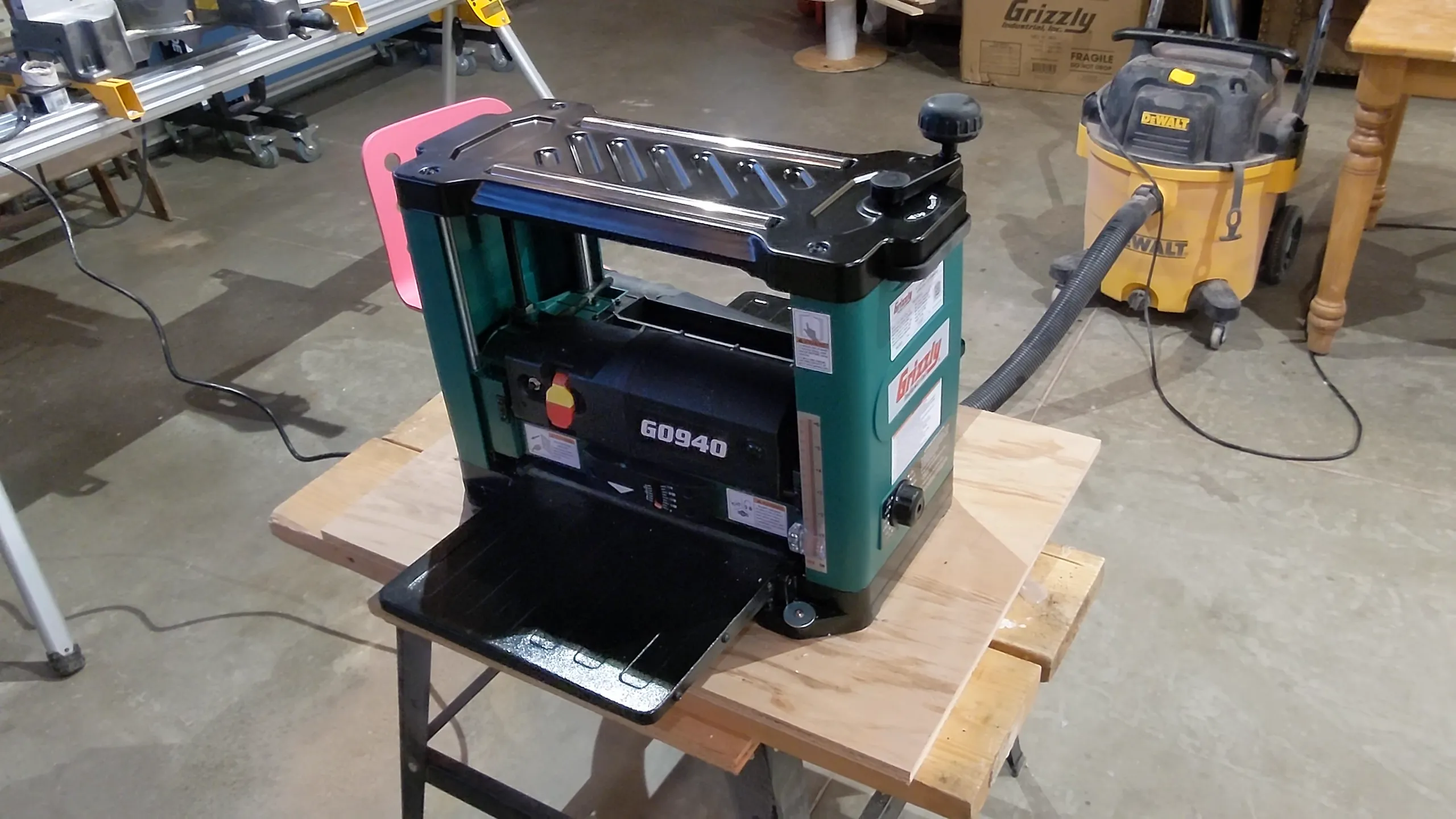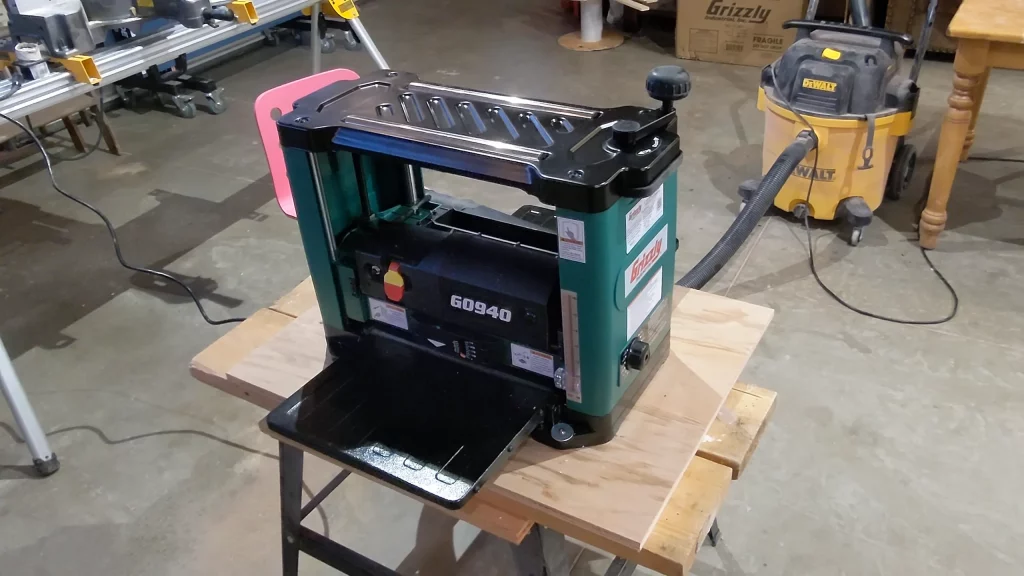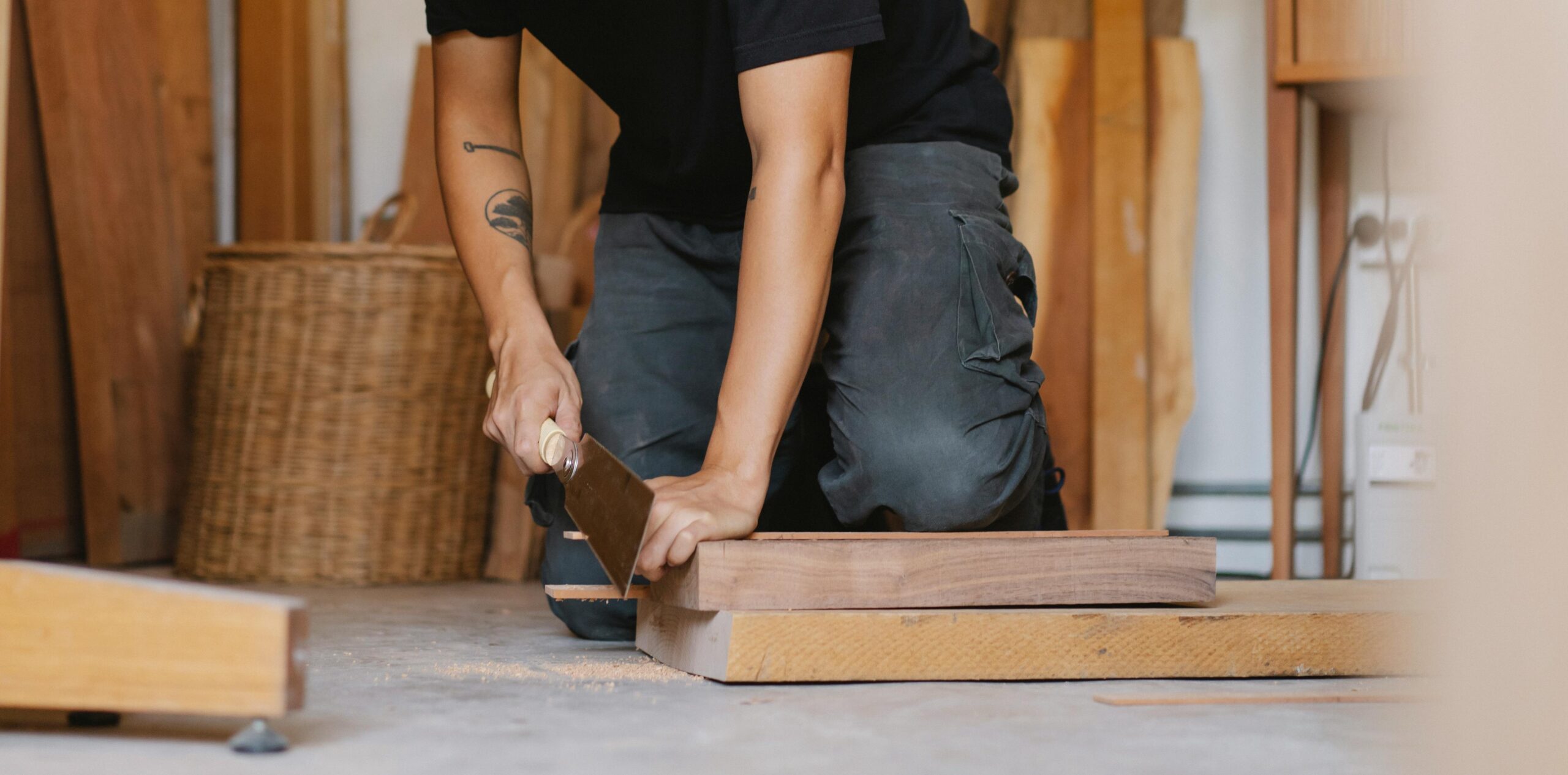11 Common Grizzly Planer Problems [Final Fix!]
Grizzly planers are popular woodworking machines used to flatten, smooth, and dimension lumber.
Like any power tool, they can develop issues that require troubleshooting and repairs.
Here are 11 of the most common Grizzly planer problems and how to fix them.
1. Snipe
Snipe is when the wood gets gouged at the end of the cut. This happens when the wood loses contact with the infeed or outfeed roller as it finishes passing through the cutterhead.
How to Fix Snipe
- Check the infeed and outfeed table alignment. Make sure they are perfectly level with the cutterhead. Even a slight mismatch can cause snipe.
- Add additional support. Place padding under the ends of the wood as it exits the planer. A small piece of scrap wood works well. This keeps the ends elevated until fully clear of the cutterhead.
- Slow the feed rate. Take very light finishing passes to minimize snipe when planing thinner or more flexible boards.
- Avoid short or narrow boards. Shorter boards are more likely to tip when the lead end loses roller contact. Avoid pieces under 2 feet long if possible.
2. Torn Grain
Torn grain happens when the wood fibers get ripped up by the planer knives instead of making a smooth cut. This leaves a rough, fuzzy surface and unsightly splintering.
How to Fix Torn Grain
- Sharpen, replace, or align the knives. Dull or misaligned knives are the main cause of tear out. Keep knives sharp and properly set.
- Take lighter passes. Make the maximum initial cut no more than 1/16” deep. For hardwoods, keep it under 1/32” on the final pass.
- Check moisture content. Wood over 15% moisture content planes poorly. Allow wet wood to dry before surfacing.
- Change feed speed. Adjusting the speed can help with certain wood species. Go slower in problem areas.
- Use a sacrificial board. Run poor surfacing boards against a backer board to minimize splintering.
3. Wavy Cuts
Wavy cuts mean the cutterhead leaves behind a wavy or uneven surface rather than uniformly flat stock.
How to Fix Wavy Cuts
- Resurface or replace knives. Knives in poor condition cause wavy planing. Dull, chipped, or uneven knives must be sharpened or replaced.
- Check and adjust infeed/outfeed tables. Any misalignment between sections will transfer into the surface smoothness.
- Clean and wax tables. Built up resin and dirt on the tables can transfer marks to the wood. Keep tables clean.
- Reduce feed rate. Going too fast over problem grain can induce waves. Slow down the feed when needed.
- Check for loose components. Things like a loose cutterhead, worn bearings, or loose belts can all contribute to waviness. Tighten components.
4. Chip Out
Chip out is when small chunks of wood get gouged out while planing, leaving pits behind in the cut surface.
How to Fix Chip Out
- Use proper feed direction. Plane boards with the grain, not against it. This will significantly reduce tearing.
- Take lighter passes. Heavy cuts magnify any small imperfections into major chips. Use thin finishing cuts.
- Check moisture content. Wood over 15% moisture content is prone to chip out from planing. Only surface fully dried stock.
- Use sacrificial backer board. Run problem boards against another board to minimize chip out on the finished side.
- Check knives for defects. Small dings or imperfections on the knife edge can gouge wood. Replace any damaged knives.
5. Chatter Marks
Chatter marks look like repeating ripples left on the wood surface. They occur from vibration between the workpiece, cutterhead, and tables.
How to Fix Chatter Marks
- Check for loose components. Anything loose on the planer can vibrate enough to cause chatter. Tighten belts, cutterhead, tables, etc.
- Reduce the depth of cut. Heavy cuts increase resistance and chatter. Take light finishing passes of 1/64″ or less.
- Lower the feed rate. Going too fast with problem boards causes vibration. Slow the feed.
- Change knives or insert orientation. Alternating bevel-out and bevel-in knives can reduce chatter with some woods.
- Plane against a board. Using a sacrificial backer board helps stabilize the workpiece.
6. Belts Slipping
Most Grizzly planers use v-belts and pulleys to transfer power from the motor to the cutterhead. Slipping belts can cause slow feeding, stalling, and uneven planing.
How to Fix Slipping Belts
- Check belt tension. Loose belts are the main cause of slipping. Adjust tension by moving the motor mount.
- Replace worn belts. Belts that are old, cracked, or glazed need to be replaced to grip properly.
- Check pulley alignment. Misaligned pulleys put uneven pressure on belts, causing slippage. Realign pulleys.
- Clean pulleys. Built-up resin or dirt on pulleys reduces traction. Clean them with solvent.
- Use correct low-stretch belts. Don’t substitute cheaper multi-v belts that have higher stretch.
7. Rough or Rippled Cuts
Rough, rippled cuts happen when the planed surface has noticeable ridges across the entire width of the board.
How to Fix Rough/Rippled Cuts
- Rotate, sharpen or replace knives. Dull, damaged, or misaligned knives can leave ridges rather than a smooth cut.
- Check feed roller pressure. Insufficient pressure allows boards to briefly lose contact during feed. Increase pressure.
- Install infeed and outfeed extensions. Adding extensions provides extra stabilization and contact with the workpiece.
- Clean infeed and outfeed tables. Resin buildup on the tables can transfer marks directly to the wood.
- Check for loose components. Any play in the cutterhead, tables, belts, etc. shows up as ripples. Tighten components.
8. Wood Sticking or Stalling
Wood sticking while feeding through the planer is common with resinous softwoods. It causes stalling, slowing, and burn marks.
How to Fix Wood Sticking/Stalling
- Wax tables and rollers. Apply paste wax to reduce friction so wood can’t momentarily grab and stick. Reapply regularly.
- Spray boards with dry lubricant. A silicone or ptfe dry lubricant prevents resin and sap from sticking. Don’t over-spray.
- Clean resin buildup. Use a solvent like alcohol to remove sticky resin from tables, rollers, and cutterhead before it accumulates.
- Adjust feed speed. Slow the feed rate with very sappy or knotty boards to avoid stalling.
- Serrate or perforate feed rollers. Adding teeth to the rollers helps positively grip slippery boards.
9. Slow or Inconsistent Feed Speeds
Inconsistent feeding leads to uneven planing and lines or ridges on the surface. It’s caused by mechanical issues in the feed system.
How to Fix Inconsistent Feeding
- Lubricate feed gearbox. Old, thickened grease prevents smooth gear operation. Regrease using manufacturer’s specs.
- Check for loose components. Any loose belts, shafts, bearings, etc. in the feed system will make speed erratic.
- Clean feed rollers. Built up pitch and resin causes uneven friction and roller speeds side-to-side.
- Replace worn feed rollers. Rollers with uneven wear or hardening grip boards inconsistently.
- Adjust feed control. Electronics issues can make speed settings unreliable. Test and adjust drive controls.
10. Machine Vibration and Movement
Vibration or movement during planing causes rough/wavy cuts, chatter marks, and inconsistent feeding.
How to Fix Vibration Issues
- Level machine and tighten mounts. An unleveled or shaky base allows movement during cuts. Level and secure.
- Check for damaged components. Anything like bent cutterhead shafts, worn bearings/pulleys, etc. creates imbalance and vibration.
- Balance cutterhead. Removing and adding weights evens out an unbalanced cutterhead to run smoothly.
- Increase feed roller pressure. This provides more downward force to stabilize the workpiece when planing.
- Check and tension v-belts. Loose belts, especially on multiple belt machines, can run unevenly causing vibration.
Vibration Fixed! 👇👇
11. Motor Overheating
The motor overheating indicates an overload condition. This may cause intermittent shutdowns to prevent permanent motor damage.
How to Fix Motor Overheating Issues
- Clean motor cooling fins. Built-up dust/debris on the fins prevents heat dissipation. Keep exterior housing and fins clean.
- Reduce depth of cut. Taking too heavy of a cut overloads the motor and causes overheating. Never exceed recommended max cut depths.
- Use recommended feed rates. Going too slow increases cutting resistance, using more motor power. Maintain proper speeds.
- Check voltage supply. Operating below the rated voltage draws excess amperage as the motor works harder. Verify voltage.
- Test/replace capacitors. Bad power factor correction capacitors stress the motor windings and cause overheating. Test or replace if needed.
Grizzly Planer Images
Final Words
Grizzly planers are good machines but like any tool can start to have problems. By learning the most common issues they develop and how to troubleshoot them, you can save money on repairs and keep your planer running smoothly for years. Proper maintenance and adjustments will prevent many problems outright.





